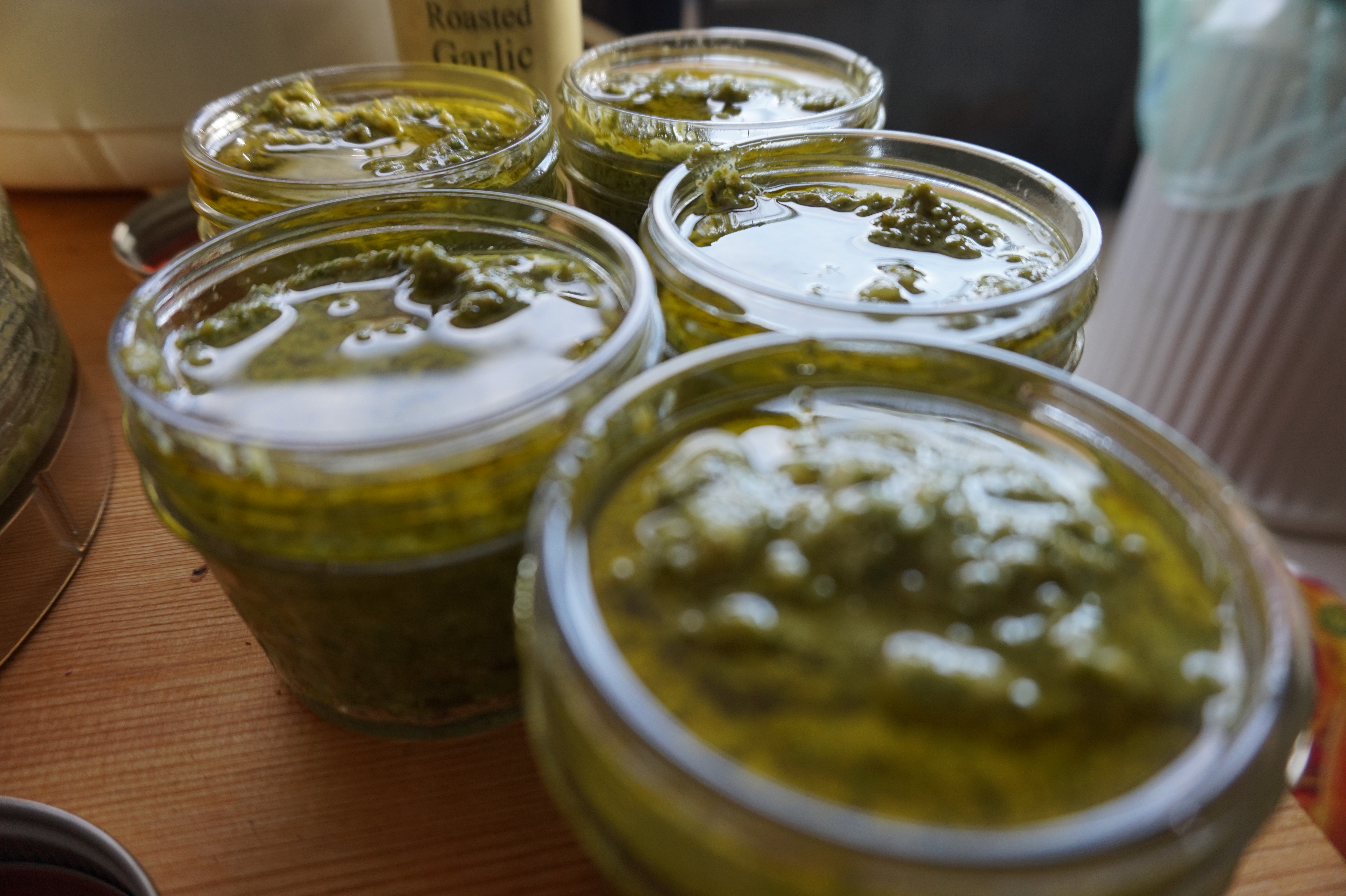Josh's pesto
If you live on the West Coast like me, you've finally hit autumn weather. Among other things, that means time to harvest and process the last leggy basil plants before they wilt in the chill. And what better use for them than pesto?
What follows is "my" pesto recipe. This originated when my mother-in-law called me because she had an excess of basil, and wanted to know if I had a recipe for pesto. I made one up on the spot and gave it to her over the phone. Since then, this has been "Josh's pesto", and the recipe has made the rounds of the Rogue Valley in Oregon.
But since she's been making pesto and freezing it every year, I've had no reason to make it myself. So when I had an excess of basil this year, I had to call her and ask for the recipe back!
Read the simple version of the recipe, then see notes on the ingredients below.
Josh's basil pesto
- 6 cups loosely packed basil leaves (about 4 mature plants)
- 8oz toasted pine nuts (about 2/3 cup)
- 10oz parmesan, sliced or diced small
- 1/2 cup roasted or toasted garlic cloves
- 1 1/4 cups high-quality olive oil, plus more
- 1 tsp salt
- 1/2 tsp fresh ground black pepper (optional)
- 3/4 cup lightly salted water (just in case)
- granulated garlic (just in case)
- food processor or food grinder, rubber spatula, 4oz or 8oz glass jars
Divide the ingredients into two or three batches, depending on the size of your food processor.
For each batch, put the pine nuts, garlic, and parmesan into the food processor. Chop until reduced to crumbs or until they start to ball up into a paste. Add the basil and salt, and mix up so that the basil isn't all on top. Puree some more until the mixture is reduced to a bean dip consistency. If it's too dry and the food processor is having trouble, add a little bit of lightly salted water to lubricate it, but as little as you can get away with.
Finally, add the olive oil, and pulse only until blended. If you over-process, you will turn the olive oil bitter. Taste, and see how peppery it is. With a very peppery olive oil, you won't add any black pepper at all; if it's mild, add some. Also taste for garlic, and if necessary add a little granulated garlic at this stage if the garlic flavor is too mild.
Spoon this into jars. Cover with a layer of olive oil to keep out air, then put lids on. Freeze anything you're not going to use within three or four days. Keeps a year or so in the freezer.
Notes on Ingredients
Toasted Pine Nuts: you can buy these from Trader Joe's. If you have raw pine nuts, toast them in a 350F oven or in a small pan on the stovetop for a few minutes, until light brown. Keep a close eye on them, they'll burn quickly.
Parmesan: while parmegiano reggiano is great, really any middle-grade or better parmesan will work for this, including Grana Padano, Vella Dry Jack, or even an aged Wisconsin parmesan.
Roasted Garlic Cloves: I roast the garlic for pesto in order to tame it. This means I can get a more rounded garlic taste. Take 1 or 2 heads of garlic (depending on size). Wrap them in foil and roast in a 400F oven for 15 to 20 minutes. Unwrap, let cool, and peel.
Toasted Garlic Cloves: This is the faster method if you don't want to wait for the oven. Break up the garlic cloves from the head, but do not peel them. Toast them in a dry pan over medium-high heat, stirring frequently, for about 5 minutes, until each clove has several browned spots. Let cool, peel and use.
Olive Oil: unlike the parmesan, it really pays to use good olive oil for this. Maybe not top top quality, but just below that. Something with a grassy taste and a peppery finish.
Granulated Garlic: Penzey's Roasted Granulated Garlic is useful if you need to add just a little punch of garlic to an otherwise finished dish.
